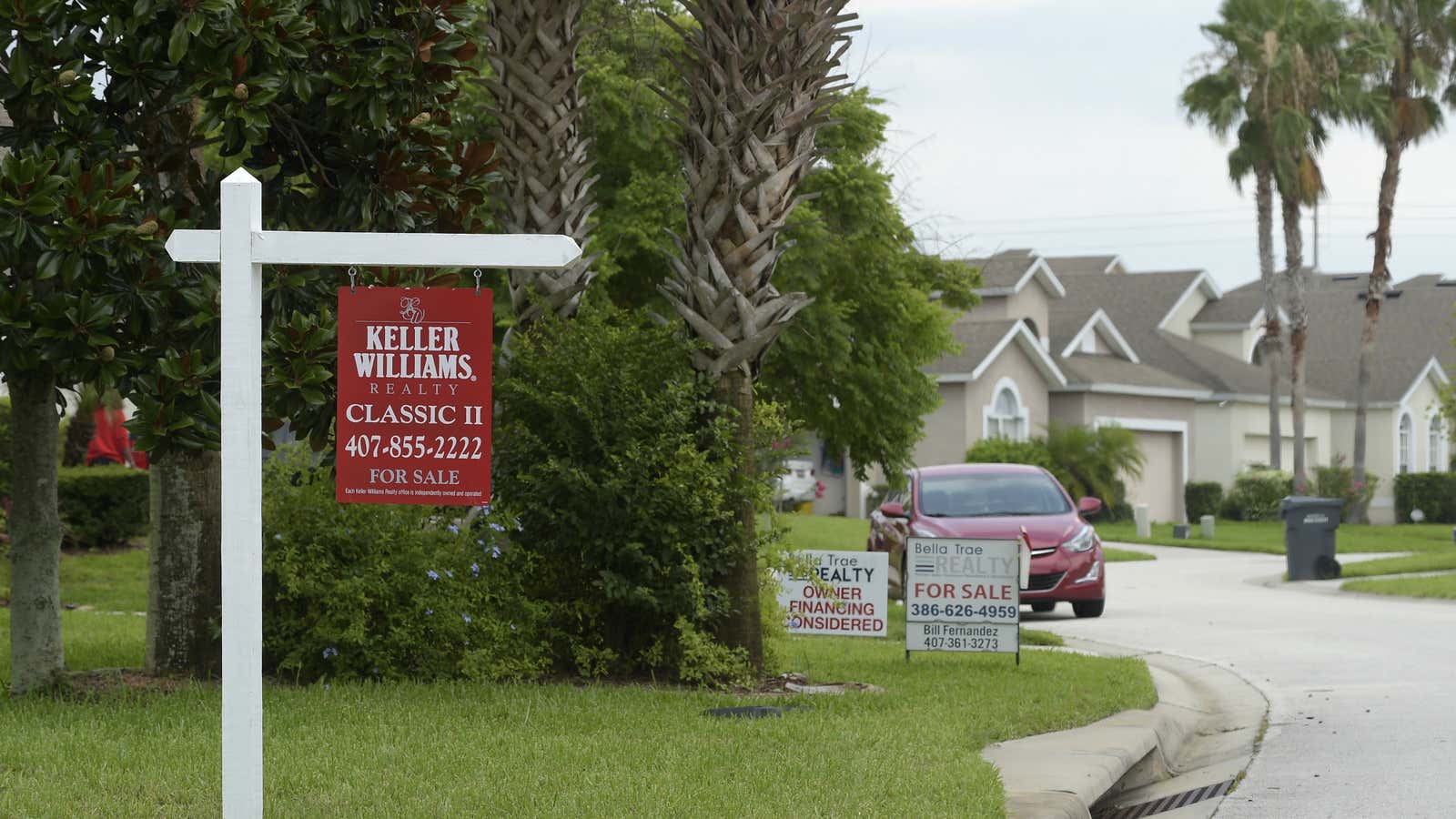The US is in its third biggest housing boom in the modern era, according to Robert Shiller, the Nobel-prize winning economist and expert in financial bubbles.
Prices on existing homes are 53% higher than they were at the bottom of the market in 2012, Shiller said in an article for the New York Times. Even once inflation is stripped out, there’s been a 40% increase since then. “This is not a return to normal, but a market that appears to be rising to a record,” he writes.
Since 1913, the two larger house booms were the “explosive run-up” in prices that preceded the global financial crisis (between February 1997 and October 2006, when prices rose by 74%), and one that was connected with World War II and the ensuing Baby Boom (when prices rose by 60% between 1942 and 1947).
The question is, will this boom come crashing down too?
Markets are watching the signals. This index only goes to September but more recent data show signs of weakness in US housing. An index measuring the National Association of Home Builders assessment of the current market and future expectations dropped in December to its lowest level since May 2015. Data on housing construction in November published by the Commerce Department was stronger than economists expected, though still notably lower than last year. Analysts at Barclays say it’s further evidence of a leveling off in activity.
Rising costs of land, labor, and materials are hurting the market. Meanwhile interest rates are rising. The Federal Reserve is widely expected to increase the target range for the Fed Funds rate to 2.25% to 2.5% tomorrow (Dec. 19), the eighth hike since 2015 and the fourth this year. Higher mortgage rates will make some houses less affordable, and on top of rising house prices, this is slowing down the market.
All of these factors don’t necessarily mean a crash is imminent. It is another concern to add to the list about how much longer the US economy can expand.
The economies of Italy, Germany, and Japan all contracted in the third quarter. China’s economy is slowing and government stimulus isn’t helping that much. Every major financial asset class has had a rotten year. Part of the US’s bond-yield curve inverted and worried traders that a recession was now inevitable in the next year or two. A recent survey of fund managers by Bank of America Merrill Lynch found that more than half expect global growth to get weaker over the next 12 months—the worst outlook since October 2008.
While Shiller wisely doesn’t dare to predict the end of the boom, he concludes “prices have been roaring higher at a speed rarely seen in American history.”
